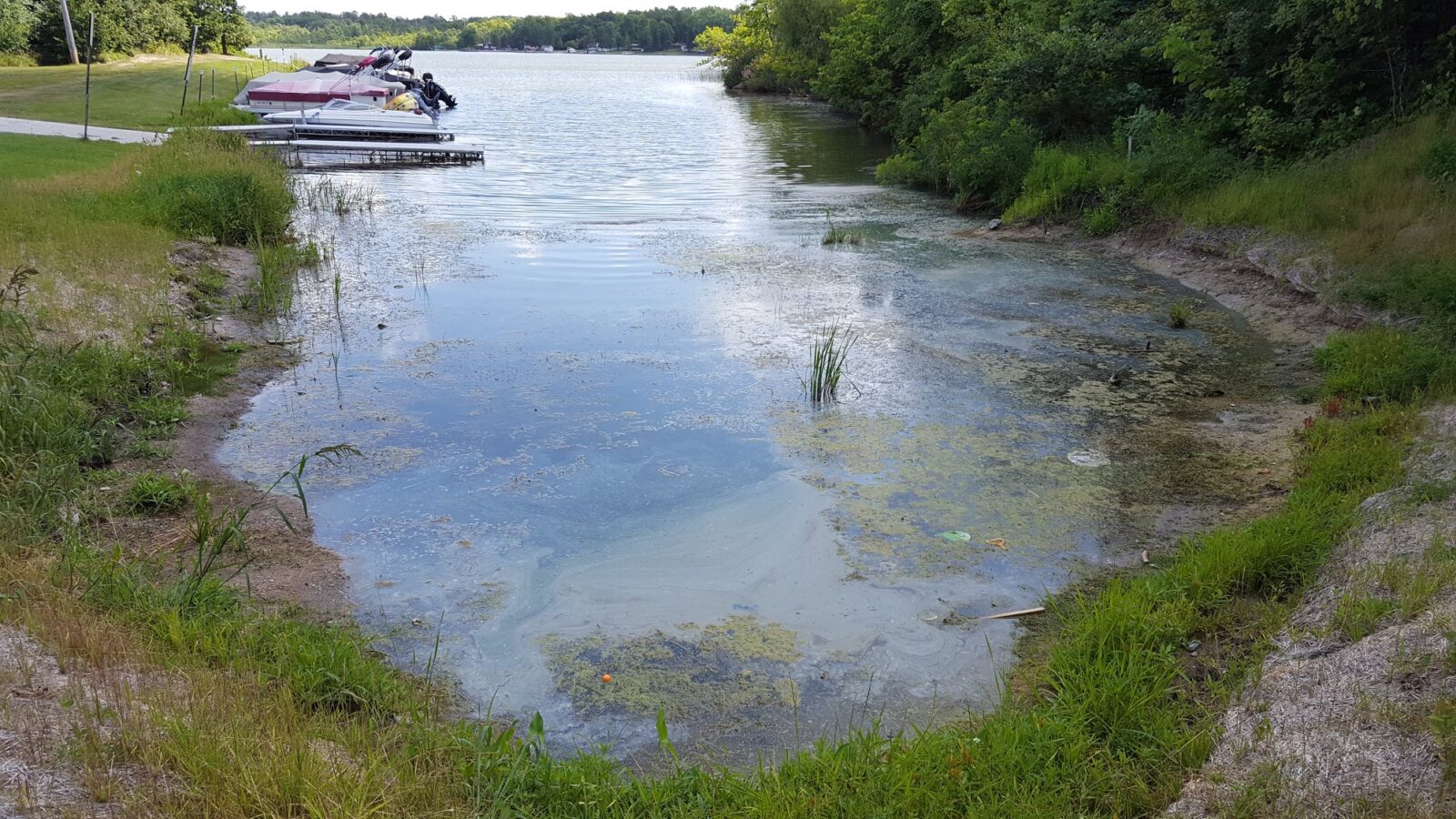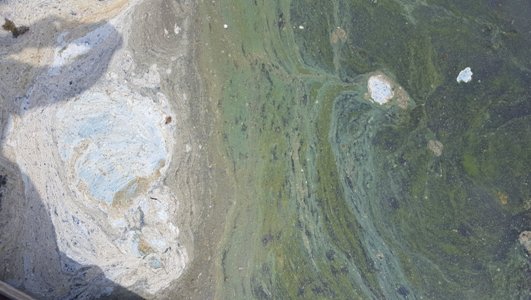There have been reports of blue-green algae blooms on lakes in Polk County. Blue-green algae are types of bacteria that are normally present in bodies of water and common in Minnesota. When conditions are right, the blue-green algae  can grow quickly forming “blooms.”
can grow quickly forming “blooms.”
Certain varieties of blue-green algae can produce toxins that are linked to illness in humans and animals. You can become sick if you swallow, have skin contact with, or breathe in airborne water droplets or if you drink water that contains algal toxins. If you become sick, you might experience vomiting, diarrhea, rash, eye irritation, cough, sore throat, and headache. Symptoms generally begin hours to two days after exposure.
Adults, children, and animals should avoid contact with water with blue-green algae. Watch for signs of recent blooms, such as green scum on the shoreline. When in doubt, stay out!
In a Facebook post, the Red Lake Watershed District said –
“A blue-green algae bloom was reported by a resident on the southwest end of the lake and by someone at the Polk County Park on August 5. Staff visited the lake and confirmed both of the blue-green algae blooms (they were quite obvious and had started to turn a blue-green color). We only had one algal toxin test kit left to test one of three samples that were collected from the public beach on the northeast end of the lake, the extreme bloom shown in some of the photos in this album, and from a dock near the Polk County Park bloom. To (momentarily) answer questions about whether the open water is safe, I tested the water I collected from the dock at Polk County Park. It was near the obvious bloom, but the blue-green algae wasn’t obviously present by the dock (though some particles did appear to be present if someone was looking for them). The Abraxis algal toxin test kit showed that the concentration of toxins in the water at the dock was not measurable as of the afternoon of August 5. The advice/slogan for dealing with these is “when in doubt, stay out.” I would definitely hope that pets and small children can be kept out of the shallow water, especially areas where this stuff can accumulate. Our test did not indicate that the open water would currently be hazardous, but we can’t predict when/if the bloom will become more toxic (or if that will affect the open water areas of the lake). The blue-green algae like nutrients (we had a lot of runoff from storms earlier this summer), heat, and stagnant water. The conditions in the bays where the blooms were found likely meet that criteria. The City of Thief River Falls erred on the side of caution and closed the beach in Thief River Falls when the bloom was occurring in the Thief River. It might be good to err on the side of caution until these blooms clear-up. We have ordered more test kits and will continue to regularly test the lake throughout August once those kits arrive.”
For more information about Blue-green algae (from the Minnesota Pollution Control Agency, CLICK HERE.





